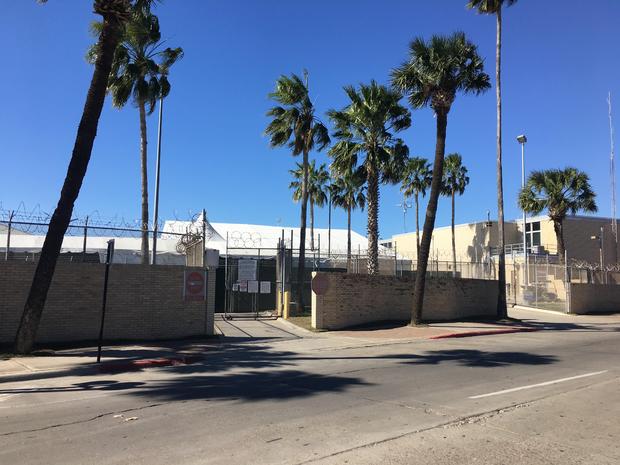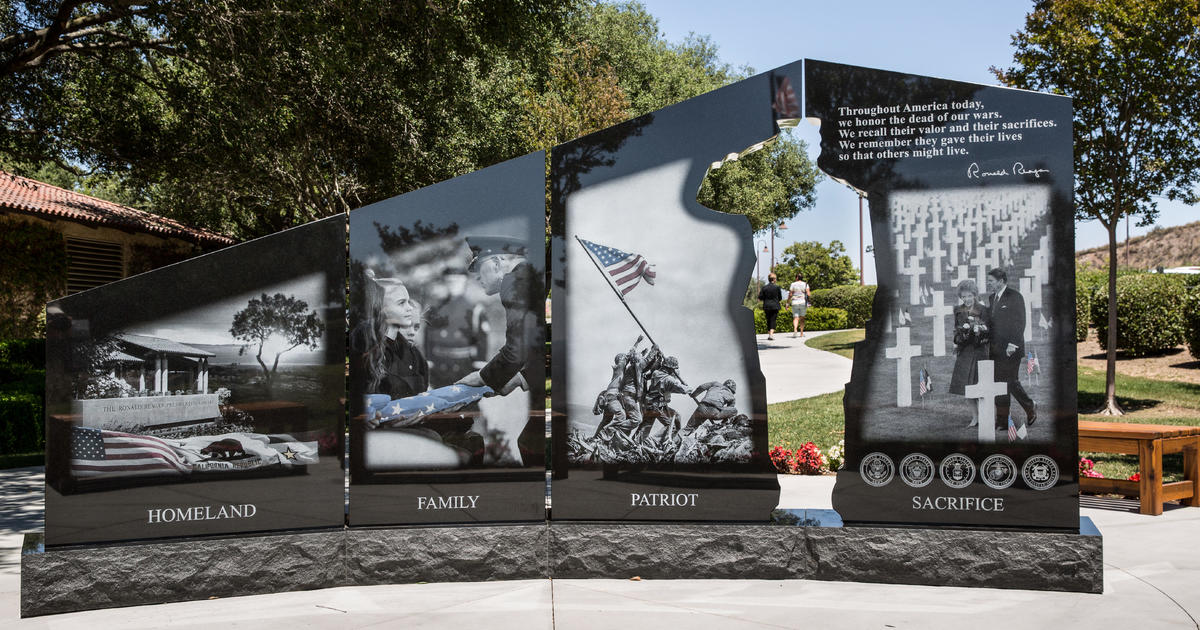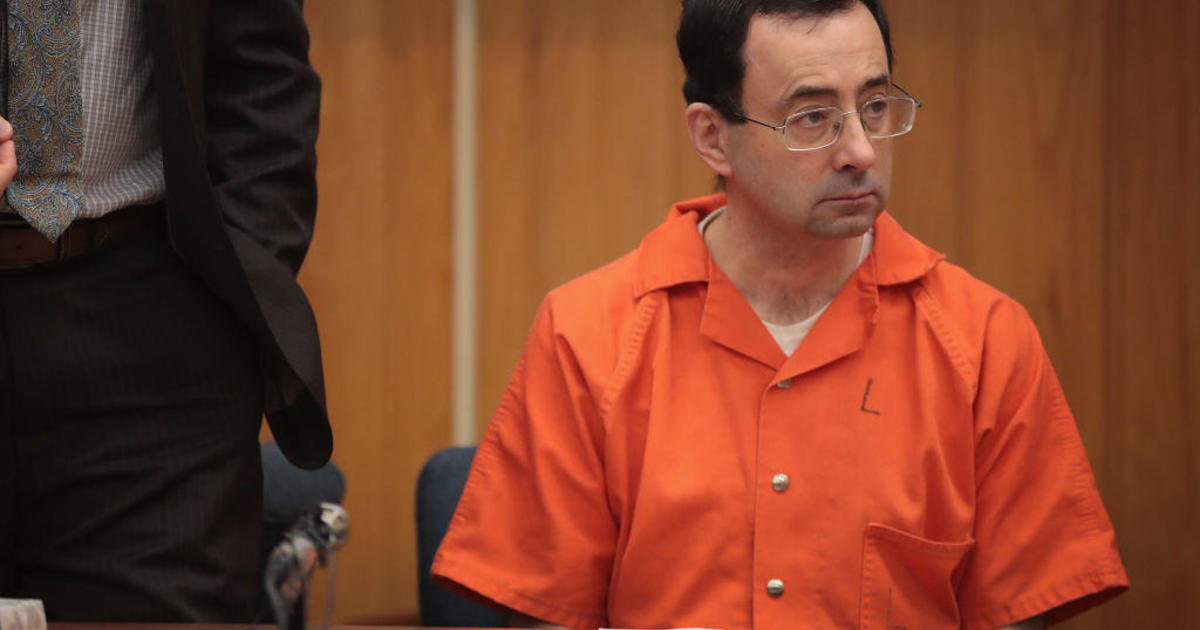Asylum seekers learn about the obstacles ahead in a hearing room on the U.S.-Mexico border
Brownsville, Texas – It was about 8:30 in the morning when 15 migrants were led single file into one of six hearing rooms at the U.S.-Mexico border crossing in Brownsville, Texas. They were from El Salvador, Honduras, Venezuela, Guatemala and Cuba.
Something they all had in common, beyond the desire for asylum in the United States, was the absence of shoelaces. It is Customs and Border Protection's policy to remove laces from migrants' shoes for the safety of the guards and the migrants, including from the shoes of children, out of fear they could be used as weapons or in a suicide attempts.
The hearing rooms at the Gateway Port of Entry are a collection of metal trailers linked together by white-tent corridors. Even though it was January, the air conditioning was on. And jackets were needed to stay comfortable during the three-hour session. On this particular morning, the migrants, including three young kids, were filing into hearing room "A."
We were told to sit in the back.
Members of the public and the press were not allowed to attend the hearings in Brownsville until about a month ago.
The complex is at the base of the International Gateway Bridge that spans the Rio Grande and connects Brownsville with Matamoros, Mexico.
We waited in an area with seating for 60 people, 10 porta potties and a heater that seemed as loud as a jet engine. It struck us that we were the only two observers present. Twenty minutes passed before we were led to a second waiting area. It had fewer chairs and porta potties but was equally deafening.
The rules for the public to attend the hearing are basic: no cellphones or cameras allowed. A security officer told us we were prohibited from speaking with the migrants.
The point of the hearing on that day was for an immigration judge to explain the asylum process to the migrants, including their rights under U.S. immigration law. Many of the people in the room had crossed into the United States illegally last fall. They were subsequently sent back across the border to wait in Mexico until their asylum hearings, in line with the United States' "Migrant Protection Protocols," more commonly known as the "Remain in Mexico" policy.
This was their first opportunity to face a judge. But it would not be in person.
Everyone faced a large video monitor. On the screen was Judge Sean Clancy in a courtroom 30 miles away.
Clancy is with the Justice Department agency that oversees immigration courts. Accompanying him in the closed circuit broadcast was a Spanish interpreter and a court clerk. A Department of Homeland Security lawyer was seated off-camera. He spoke only six times and said no more than a couple of short phrases. The migrants never saw his face.
Judge Clancy began by asking the group, through his interpreter, if there was anyone in the room whose first language was something other than Spanish. A 30-year-old man named Alberto raised his hand. He was there with his seven-year-old son, Carlos. The child looked small for his age.
Alberto explained in halting Spanish that he spoke K'iche, a Mayan language common in the central highlands of Guatemala.
Without missing a beat, Judge Clancy dialed a number on a speaker phone and asked the attendant who answered to provide a K'iche translator. After less than a minute of the kind of hold music you would hear if you called a dentist, a cheerful man with a soft Texas accent got on the line and began to speak to Alberto in K'iche.
As Clancy explained the asylum process to migrants, he was clear about the obstacles ahead.
"The nature of these hearings is adversarial," he said. "The Department of Homeland Security will supply reasons why you should not enter the United States."
"DHS will treat you as someone who is attempting to enter against U.S. law," he said.
Clancy then reviewed the documents and evidence that Alberto would need to prove that he and his son should be granted asylum. The application for asylum and supporting papers must be in English, accompanied by copies in Spanish.
"I recognize this possesses obstacles and difficulties but there is no way around it. It is what the law requires," Clancy said. "My role is to make sure you have a fair hearing."
Judge Clancy also told Alberto and the other asylum seekers they would be given a list of legal aid organizations that could help them with their paperwork, but it would be the migrants' responsibility to pay for their own attorneys.
We were told by immigration lawyers in the area that the vast majority of asylum seekers ultimately end up representing themselves at these hearings.
Alberto said he understood the judge but he was fearful of returning to Mexico with his son because he did not speak Spanish well.
"See what you can get done on the application and we'll see where we can go from there," Clancy said in a businesslike tone that was consistent throughout the hearing. The few times he did try to crack a small joke, they seemed lost in translation.
After Alberto was given a date for his next hearing, Clancy offered the same explanations on the process to the others with the help of his Spanish interpreter. Seven-year old Carlos, who up to that moment had been remarkably patient for a child his age, began to hum. One of the guards won his silence with a small bag of snacks.
Once Clancy finished with his rundown of what was required of the asylum applicants, he asked how many people were afraid to return to Mexico. One hand went up. That was followed by six others. A woman who was there with her 11-year-old daughter was the last to haltingly raise her hand.
"Some of us are afraid to say we are afraid to go back to Mexico because we don't want to be sent to Central America," she said. The woman was referring to new agreements the U.S. has with Honduras, Guatemala and El Salvador to send migrants seeking asylum in the U.S. to those countries instead. The only agreement implemented so far is the one with Guatemala.
Judge Clancy asked if she was afraid to wait in Mexico.
"Honestly, yes," the woman replied.
Judge Clancy confirmed with the DHS lawyer just off-screen that he'd noted the migrants' fears of returning to Mexico so that they may have an interview about their reasons for being afraid. It was unclear to us when that would happen.
The only asylum applicant who had a lawyer present was a 75-year-old woman from Venezuela. She left her home country in October and took a plane to Panama, then flew to Mexico and illegally crossed the Rio Grande into the United States. She did not say why she wanted asylum.
The young lawyer who represented the woman was doing so pro-bono. She had only become aware of the woman's case at 11 o'clock the night before and was not fully acquainted with all the details of her asylum claim. As she leaned over to ask her client a question, Judge Clancy's interpreter began to translate the private conversation. Judge Clancy recognized it was a private attorney-client exchange, stopped his interpreter and apologized to the lawyer.
"A lot of things would be easier to deal with if you are here," he noted about his closed circuit courtroom and the distance between all involved. Then the screen temporarily went to black on his end.
"I thought I lost you," Clancy said with some relief once the live picture returned.
The judge gave everyone in the group a final opportunity to ask questions. They all declined. The next court date for most of the asylum seekers was scheduled for April 30. That's when they would be able to make their best case to stay in the United States.
The group then began to file out of the room and head back over the bridge to Mexico, where they will wait three more months for their next appearance before Judge Clancy.
The only one who seemed satisfied by the proceedings was little Carlos. The Guatemalan boy looked back into the room and smiled. The security guard had given him a second bag of snacks.
Guy Campanile is a producer for "60 Minutes." Lucy Hatcher is an Associate Producer for "60 Minutes"





